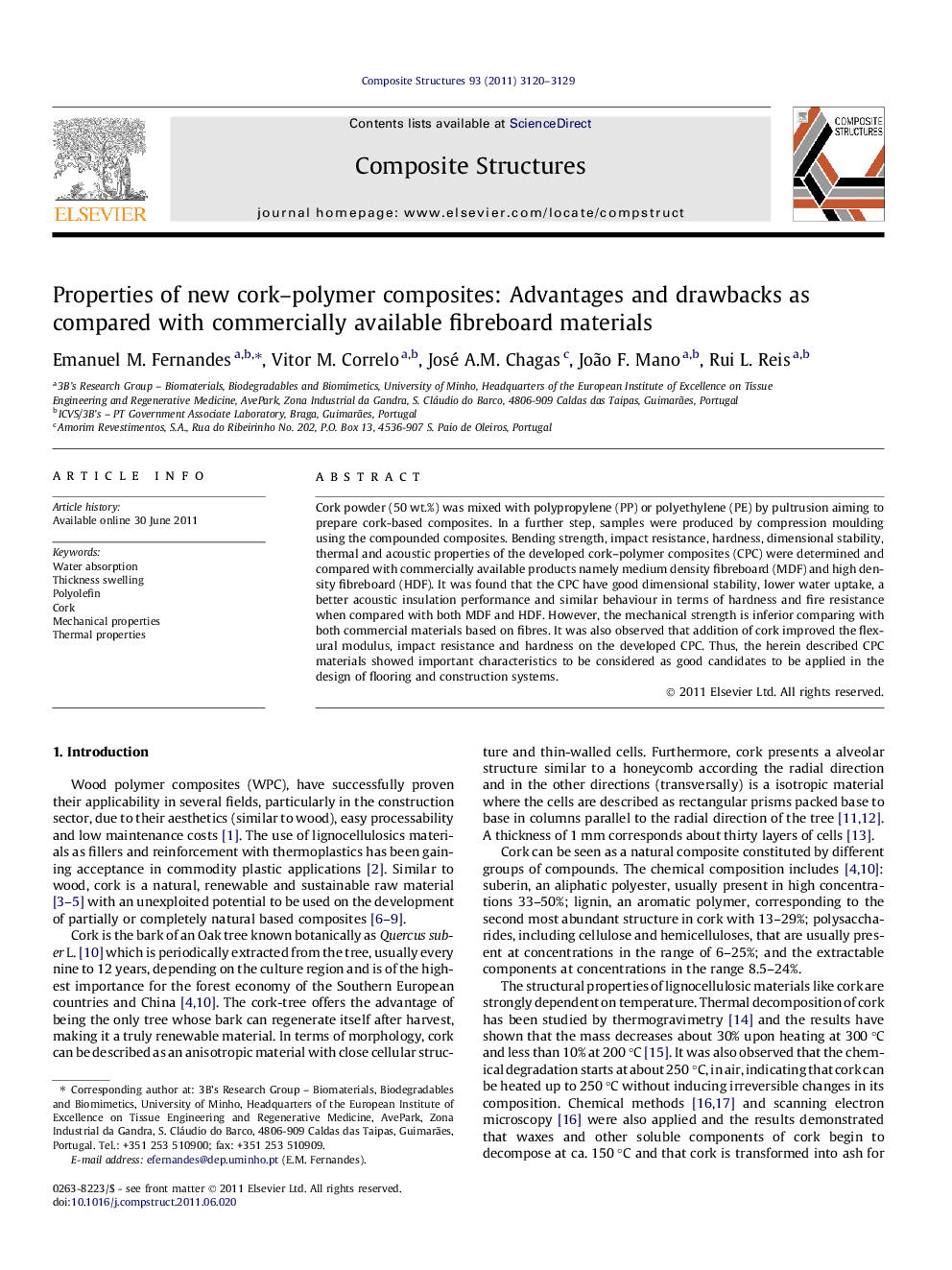| Article ID | Journal | Published Year | Pages | File Type |
|---|---|---|---|---|
| 252862 | Composite Structures | 2011 | 10 Pages |
Cork powder (50 wt.%) was mixed with polypropylene (PP) or polyethylene (PE) by pultrusion aiming to prepare cork-based composites. In a further step, samples were produced by compression moulding using the compounded composites. Bending strength, impact resistance, hardness, dimensional stability, thermal and acoustic properties of the developed cork–polymer composites (CPC) were determined and compared with commercially available products namely medium density fibreboard (MDF) and high density fibreboard (HDF). It was found that the CPC have good dimensional stability, lower water uptake, a better acoustic insulation performance and similar behaviour in terms of hardness and fire resistance when compared with both MDF and HDF. However, the mechanical strength is inferior comparing with both commercial materials based on fibres. It was also observed that addition of cork improved the flexural modulus, impact resistance and hardness on the developed CPC. Thus, the herein described CPC materials showed important characteristics to be considered as good candidates to be applied in the design of flooring and construction systems.
► The work creates a viable and profitable alternative to storage or burn of cork powder. ► Cork–polymer composite materials for building applications such as core in flooring. ► The cork composites show low water absorption and low thickness swelling variation. ► Cork improved the fire resistance of the thermoplastic composites. ► Composites with good acoustic behaviour as compare with the commercial fibre boards.
